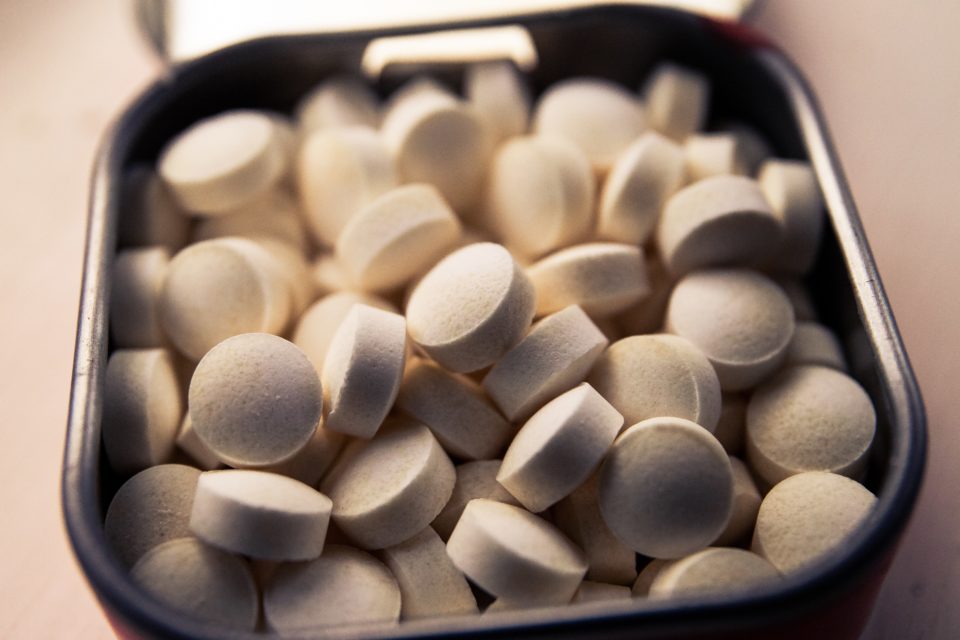 I believe marketing to be an honorable profession, reaching out to the consumer or to businesses with messages that, however contrived they may be, minimally deliver some value along the way. Not so with what I think of as “nefarious marketing” techniques. Ones that take advantage of or attempt to change behavior. One doesn’t have to look too much further than the marketing of OxyContin to feel angry and let down by some dubious marketers.
I believe marketing to be an honorable profession, reaching out to the consumer or to businesses with messages that, however contrived they may be, minimally deliver some value along the way. Not so with what I think of as “nefarious marketing” techniques. Ones that take advantage of or attempt to change behavior. One doesn’t have to look too much further than the marketing of OxyContin to feel angry and let down by some dubious marketers.
At this time, lawyers representing 500 cities, counties and Native American tribes, are suing the company OxyContin maker Purdue Pharma LP and the Sacklers, the family behind the company, alleging the company and its owners helped fuel the U.S. opioid epidemic. Not only is it pretty evident that they are guilty as charged, but according to the records, the Sacklers reaped up to $13 billion from the OxyContin maker.
Of course, the company and family have denied allegations they contributed to the U.S. opioid crisis. However, the lawsuits, largely brought by state and local governments, allege Purdue and the Sacklers contributed to a public health crisis that has claimed the lives of nearly 400,000 people since 1999 by aggressively marketing opioids while downplaying their addiction and overdose risks.
In 1996 Purdue Pharma introduced a new drug – a time-released formulation of oxycodone, an opioid painkiller. OyxContin, as the drug was called, was touted as having a low risk of addiction. The company anticipated huge sales for this new drug and was determined to back it in significant ways. In fact, in 2001 alone, the company spent $200 million in an array of approaches to market and promote OxyContin. This huge sum was invested in the types of marketing and sales tactics that played an outsized role in the enormous market success of OxyContin.
The extraordinary amount of money spent in promoting a sustained-release opioid was unprecedented. During OxyContin’s first 6 years on the market, Purdue spent approximately 6 to 12 times more on promoting it than the company had spent on promoting MS Contin, or than Janssen Pharmaceutical Products LP had spent on Duragesic, one of OxyContin’s competitors. Although OxyContin has not been shown to be superior to other available potent opioid preparations, by 2001 it had become the most frequently prescribed brand-name opioid in the United States for treating moderate to severe pain.
Here’s an overview on where the money was invested:
Events:
Purdue backed OxyContin with an aggressive marketing campaign. From 1996 to 2001, Purdue conducted more than 40 national pain-management and speaker-training conferences at resorts in Florida, Arizona, and California. More than 5000 physicians, pharmacists, and nurses attended these all-expenses-paid symposia, where they were recruited and trained for Purdue’s national speaker bureau. It is well documented that this type of pharmaceutical company symposium influences physicians’ prescribing, even though the physicians who attend such symposia believe that such enticements do not alter their prescribing patterns.
Sales:
From 1996 to 2000, Purdue increased its internal sales force from 318 sales representatives to 671, and its total physician call list from approximately 33 400 to 44 500 to approximately 70 500 to 94 000 physicians. Through the sales representatives, Purdue used a patient starter coupon program for OxyContin that provided patients with a free limited-time prescription for a 7- to 30-day supply. By 2001, when the program was ended, approximately 34 000 coupons had been redeemed nationally.
Coupons:
Although there are no available data for evaluating the promotional effect of free starter coupons for controlled drugs, it seems likely that the over- and mis-prescribing of a controlled drug are encouraged by such promotional programs and the public health would be well served by eliminating them.
Incentives:
The company also used a bonus system to incentivize its pharmaceutical representatives to increase OxyContin sales. The average bonus actually exceeded the representatives’ annual salaries.
A lucrative bonus system encouraged sales representatives to increase sales of OxyContin in their territories, resulting in a large number of visits to physicians with high rates of opioid prescriptions, as well as a multifaceted information campaign aimed at them. In 2001, in addition to the average sales representative’s annual salary of $55 000, annual bonuses averaged $71 500, with a range of $15,000 to nearly $240,000. Purdue paid $40 million in sales incentive bonuses to its sales representatives that year.
Data:
One of the cornerstones of Purdue’s marketing plan was the use of sophisticated marketing data to influence physicians’ prescribing. Drug companies compile prescriber profiles on individual physicians—detailing the prescribing patterns of physicians nationwide—in an effort to influence doctors’ prescribing habits. Through these profiles, a drug company can identify the highest and lowest prescribers of particular drugs in a single zip code, county, state, or the entire country. One of the critical foundations of Purdue’s marketing plan for OxyContin was to target the physicians who were the highest prescribers for opioids across the country. The resulting database would help identify physicians with large numbers of chronic-pain patients. Unfortunately, this same database would also identify which physicians were simply the most frequent prescribers of opioids and, in some cases, the least discriminate prescribers.
Premiums:
The distribution to health care professionals of branded promotional items such as OxyContin fishing hats, stuffed plush toys, and music compact discs (“Get in the Swing With OxyContin”) was unprecedented for a schedule II opioid, according to the Drug Enforcement Administration.
Market Expansion:
Purdue “aggressively” promoted the use of opioids for use in the “non-malignant pain market.” A much larger market than that for cancer-related pain, the non–cancer-related pain market constituted 86% of the total opioid market in 1999. Purdue’s promotion of OxyContin for the treatment of non–cancer-related pain contributed to a nearly tenfold increase in OxyContin prescriptions for this type of pain, from about 670 000 in 1997 to about 6.2 million in 2002, whereas prescriptions for cancer-related pain increased about fourfold during that same period. Although the science and consensus for the use of opioids in the treatment of acute pain or pain associated with cancer are robust, there is still much controversy in medicine about the use of opioids for chronic non–cancer-related pain, where their risks and benefits are much less clear. Prospective, randomized, controlled trials lasting at least 4 weeks that evaluated the use of opioids for chronic, non–cancer-related pain showed statistically significant but small to modest improvement in pain relief, with no consistent improvement in physical functioning. A recent review of the use of opioids in chronic back pain concluded that opioids may be efficacious for short-term pain relief, but longer-term efficacy ( > 16 weeks) is unclear.
Messaging:
A consistent feature in the promotion and marketing of OxyContin was a systematic effort to minimize the risk of addiction in the use of opioids for the treatment of chronic non–cancer-related pain. One of the most critical issues regarding the use of opioids in the treatment of chronic non–cancer-related pain is the potential of iatrogenic addiction. The lifetime prevalence of addictive disorders has been estimated at 3% to 16% of the general population. However, we lack any large, methodically rigorous prospective study addressing the issue of iatrogenic addiction during long-term opioid use for chronic nonmalignant pain.
In much of its promotional campaign—in literature and audiotapes for physicians, brochures and videotapes for patients, and its “Partners Against Pain” website—Purdue claimed that the risk of addiction from OxyContin was extremely small.
Purdue trained its sales representatives to carry the message that the risk of addiction was “less than one percent,” but misrepresenting the risk of addiction proved costly for Purdue. On May 10, 2007, Purdue Frederick Company Inc, an affiliate of Purdue Pharma, along with 3 company executives, pled guilty to criminal charges of misbranding OxyContin by claiming that it was less addictive and less subject to abuse and diversion than other opioids, and will pay $634 million in fines.
In addition to the ongoing direct messaging that specifically downplayed the risk of addiction, in 1998, Purdue distributed 15,000 copies of an OxyContin video to physicians without submitting it to the FDA for review, an oversight later acknowledged by Purdue. In 2001, Purdue submitted to the FDA a second version of the video, which the FDA did not review until October 2002—after the General Accounting Office inquired about its content. After its review, the FDA concluded that the video minimized the risks from OxyContin and made unsubstantiated claims regarding its benefits to patients.
Marketing and promotion by the pharmaceutical industry have considerably amplified the prescription sales and availability of opioids. A number of factors have contributed to the marked growth of opioid abuse in the United States, but one factor is certainly the much increased availability of prescription opioids. The public interest and public health would be better served by a redefinition of acceptable and allowable marketing practices for opioids and other controlled drugs.
On an interesting side note, it is ironic that Arthur Sackler, one of the Sackler brothers who died in 1987, had been inducted into the Medical Advertising Hall of Fame for his promotional work in helping Valium become the first $100 million drug.
Sources:
https://www.statnews.com/2019/01/15/massachusetts-purdue-lawsuit-new-details/
